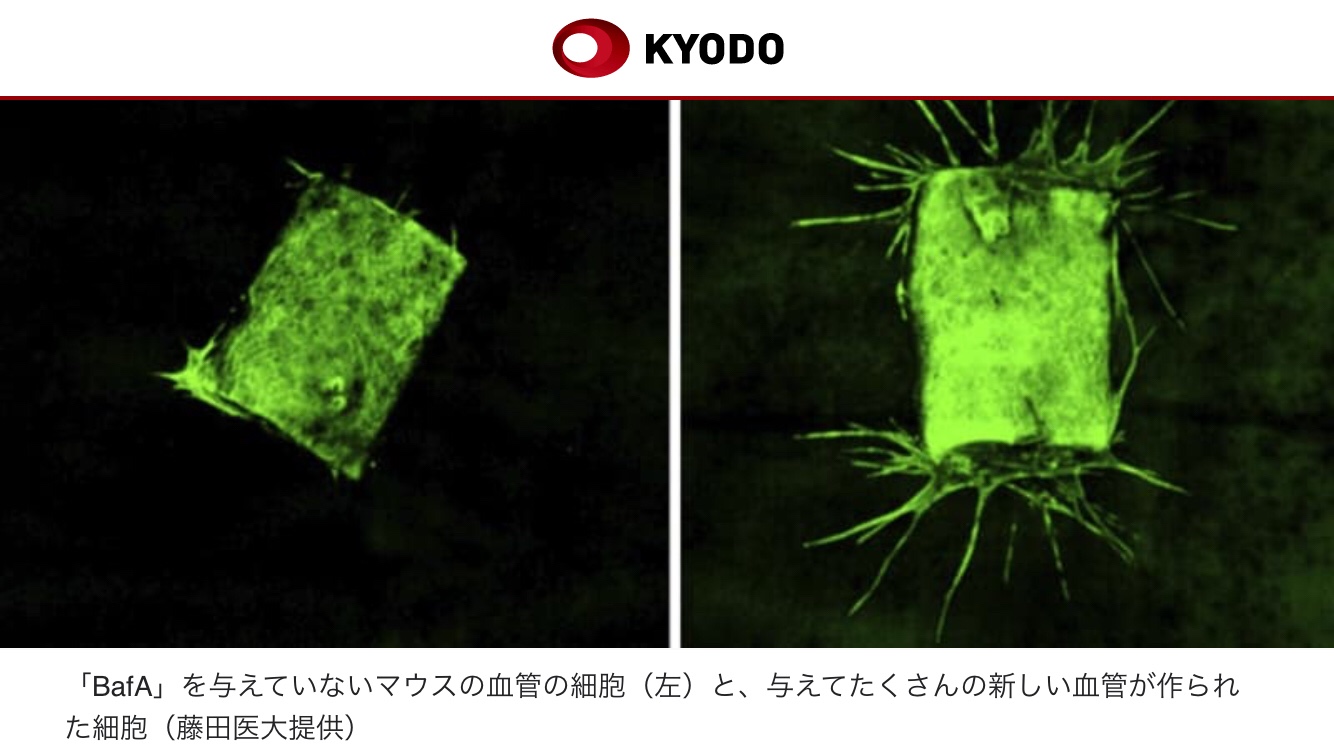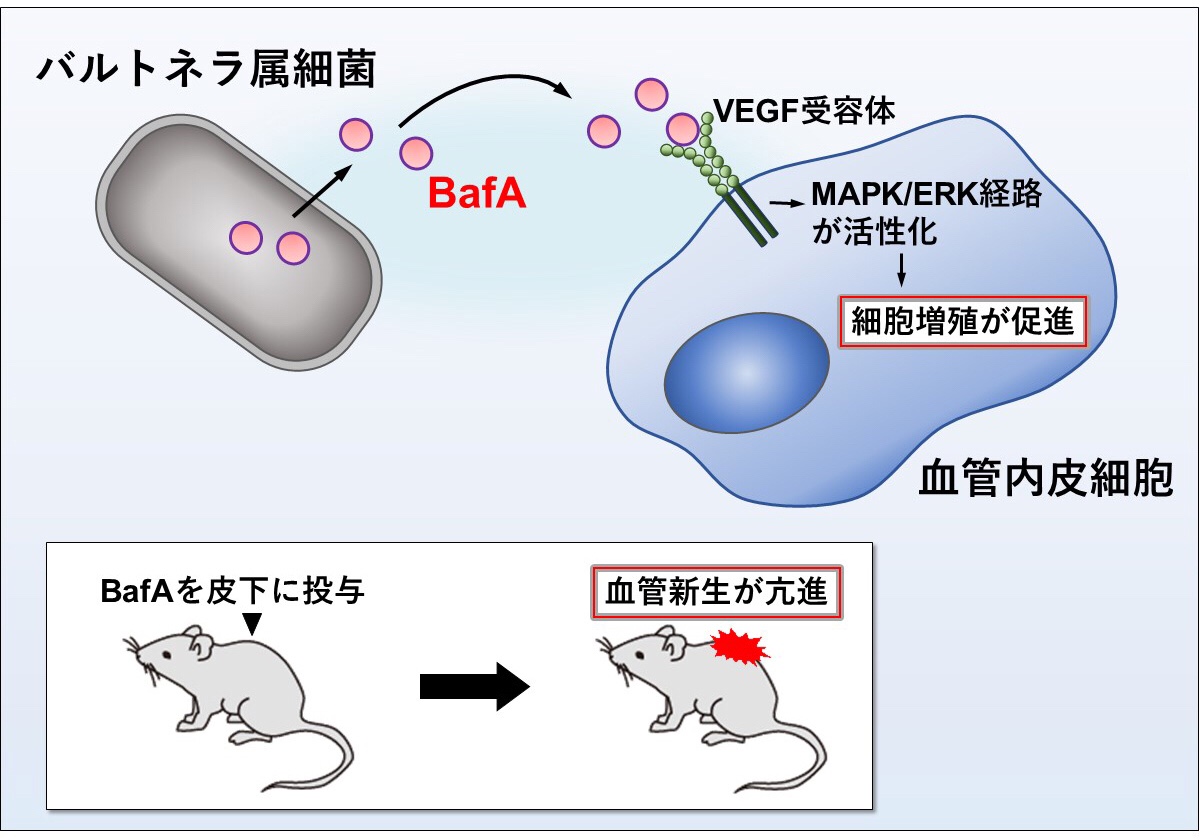
Cells of mouse blood vessels that did not receive “BafA” (left) and cells that gave many new blood vessels (provided by Fujita Medical School).

Fujita Medical University: Discovery of substances that make blood vessels, bacteria: Use in regenerative medicine
Fujita Medical University and Osaka University:
This bacterium causes fever when it infects humans.
In the group of bacteria “Bartonella”, found “a protein that works to increase human blood vessels”.
The Fujita Medical University and Osaka University team announced in an English scientific magazine on July 16th.
“A substance that creates blood vessels”:
Lecturer Tsukamoto of Fujita Medical University found “a substance that creates blood vessels” with bacteria.
To stretch blood vessels around organs made by regenerative medicine,
It may be used to treat myocardial infarction.
Bacteria “Bartonella”:
Bartonella causes “cat scratch disease”, which causes fever and swollen lymph nodes.
When a person without immunity is infected, the number of blood vessel cells increases abnormally.
Traditionally, it was thought that Bartonella secretes substances that increase the number of cells in blood vessels, but the actual identity was unknown.
KYODO communication
https://this.kiji.is/656437001134408801
The Bartonella autotransporter BafA activates the host VEGF pathway to drive angiogenesis
Published: 16 July 2020
Kentaro Tsukamoto, Naoaki Shinzawa, […]Yohei Doi
Nature Communications volume 11, Article number: 3571 (2020) Cite this article
Metrics detailsNature Communications
Abstract
Pathogenic bacteria of the genus Bartonella
can induce vasoproliferative lesions during infection.
The underlying mechanisms
are unclear, but involve secretion of an unidentified mitogenic factor.
Here, we use functional transposon-mutant screening in Bartonella henselae to identify such factor as a pro-angiogenic autotransporter, called BafA.
The passenger domain of BafA
induces cell proliferation, tube formation and sprouting of microvessels, and drives angiogenesis in mice.
BafA
interacts with vascular endothelial growth factor (VEGF) receptor-2 and activates the downstream signaling pathway, suggesting that BafA functions as a VEGF analog.
A BafA homolog from a related pathogen, Bartonella quintana, is also functional. Our work unveils the mechanistic basis of vasoproliferative lesions observed in bartonellosis,
and we propose BafA as a key pathogenic factor contributing to bacterial spread and host adaptation.